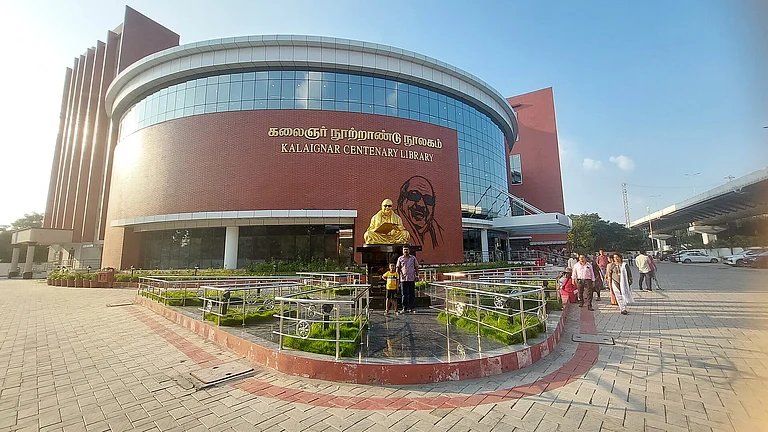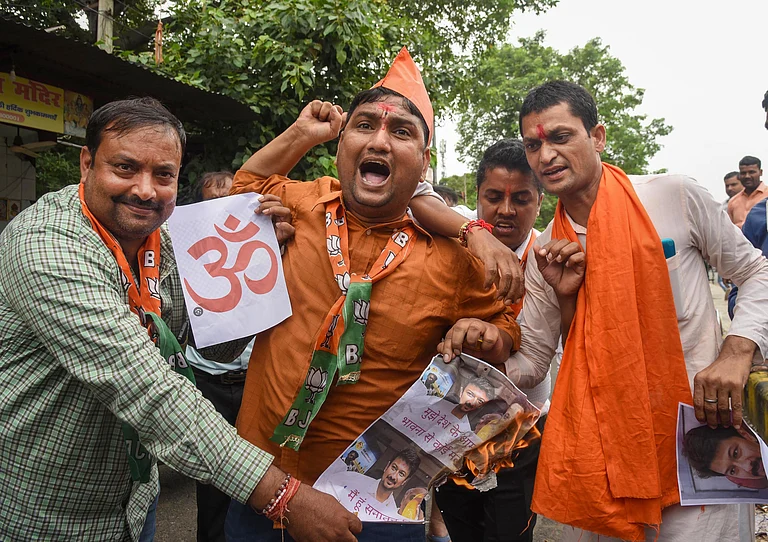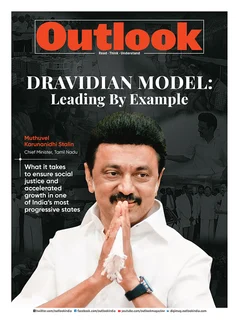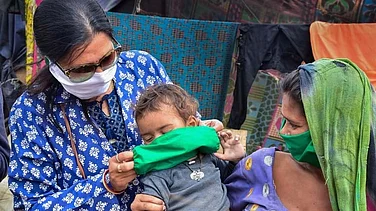When one gleans from the innumerable documents pertaining to the public health initiatives in Tamil Nadu, is the prescient mission of the Adyar Cancer Institute- “Today’s Research is Tomorrow’s Treatment”. At a deeper level, this encapsulates modern Tamil Nadu and its model of governance. Tamil Nadu’s developmental model is based on informed decision making process where a wide and considered consultation process precedes the pronouncement of policy decisions. Chief Minister M.K. Stalin often refers to the Dravidian model of growth as the democratic answer to the extreme centralisation we are witnessing over the last decade. For some, the Dravidian Model remains an elusive concept. But, a look at the social and the economic indicators of the state will gives us a clear picture of the Dravidian Model.
The first element of the Dravidian Model is the concept of the self-respect and the dignity of individuals. The primary demands of the movement, for nearly a century, were to create an egalitarian society that lays emphasis on equality between men and women, economic parity in the society, no caste hierarchy, or discrimination based on religion or varna and the assurance of general unity and friendship among the citizens of India. Here the nation-state is conceived as a “coming together” model as opposed to “holding together” model. In the ‘holding together” model the state apparatuses are given more importance over the legitimate aspirations of the people. In contrast, the centrality of the imagination of the ‘coming together’ model is the people of the country and their aspirations, expectations and well-being.
There are two important books that explain the defining contribution of the Dravidian model to India’s balanced growth. One is “A Dravidian Journey: Glimpses into Tamil Nadu’s Transformation to a Post-agrarian Society” by J.Jeyaranjan and the other is “The Dravidian Model: Interpreting Political Economy of Tamil Nadu” by A. Kalaiyarasan and M. Vijayabaskar.

As I have written elsewhere, Jeyaranjan’s writings flows from a belief in the inalienable power of evidence as the building block of both society and knowledge. The idea of post-facto analysis is central to his predictions. He has been spelling out how Tamil Nadu’s rural economy has become ‘post- agrarian’. It is pertinent here to recollect one of his striking observations which help us understand how Tamil Nadu transformed itself over the last seven to eight decades- he wrote “The term ‘post-agrarian’ reflects the general observations that the importance of agriculture in rural livelihoods has declined and that, as in Gangaikondan, far fewer village households than before can sensibly be described as those of ‘peasants’ (or as those of agricultural petty commodity producers). The diversification of employment, often involving extensive commuting from villages, and resort to migration, both circular and long-term, to towns and cities (as well, in some cases, as to other rural sites – such as in the case of the many people from villages around Villupuram who migrate for long periods for sugar-cane cutting) means, too, that the category of ‘rural’ or ‘agrarian labour’ now has little meaning.”
Academics today concede that throughout the post-independence period, the state of Tamil Nadu has consistently performed better than most other states vis-a-vis several major healthcare indicators, including the infant mortality rate and total fertility rate. It has received praise for the deep penetration and robust functioning of its public health system. Scholars argue that the state’s uniqueness in human and social development primarily originates in the egalitarian politics and radical social movements of the early twentieth century which constituted a “Dravidian common-sense” that has since “shaped the development trajectory of the state.” This argument of the significance of egalitarian politics in improvements in health and wellbeing receive ample support from existing social sciences literature on health, equity, and justice.
Kalaiarasan and Vijayabaskar, using a range of data, have established that the Dravidian model’s growth is also aimed at reducing inequality. Per capita income in Tamil Nadu, that was nearly at the level of the national average in 1960-61, became more than 150% of the national average by 2010-11. At the same time, the reduction in both rural and urban poverty levels is also dramatic. From being more than the national average, it came down to being the third lowest in the country, less than Maharashtra and Gujarat which record greater per capita income. Hence, the compelling need to study the economic growth with reduction in levels of inequality puts the Dravidian model as a major subject of study for transformative politics. Jeyaranjan has eloquently explained the salient features of the Dravidian Model. It works on the premise that the successes of the governmental policies lie in the democratisation of education, health and employment opportunities.

Various articles in this compendium are testimonies to the unique model of development where accelerated growth and social welfare complement each other rather than appearing to be mutually exclusive. The empirically rich data section explains how Tamil Nadu progressed over the last six decades and how its indicators are comparable to those of the European countries on various counts.
I am going to look at four important indicators to substantiate my argument that the Dravidian Model of growth had delivered on multiple fronts and was not trapped in silos, an approach that appears to govern the other models. On the education front, while all the indicators from the state are impressive, the most striking one is the data pertaining to graduate enrolment ratio (GER). Tamil Nadu’s GER at 51.3%, is one of the highest in the world (37% in the US), and is way higher than the Indian average of 27%. Through various affirmative actions, the state has ensured education for nearly each and every social group.
In the area of Industrial growth, some economists tend to look at the aggregate numbers rather than the context behind every indicator. Tamil Nadu in the aggregate GDP industrial growth ranks third in India coming only behind Maharashtra and Gujarat. A World Bank study points out that Tamil Nadu has a smaller share of poor compared to its population; consumption inequality has decreased in the state; poverty has declined substantially in the state. Tamil Nadu has the lowest GINI index, (0.32) which measures inequality, implying lesser inequality in comparison to other states.

The third area is providing food security and creating a hunger-free state. The Tamil Nadu State Food Policy pursues a Universal Public Distribution System (PDS) to ensure non-excludability, easy access and adequate availability of food grains at affordable prices. The focus is to ensure that genuinely poor households do not get excluded from the PDS owing to administrative infeasibility and errors in estimation and the enumeration of families Below Poverty Line (BPL). At present, there are 33,222 Fair Price Shops that are serving 1.98 crore families which is the best national average. The food security scheme also enhanced the self-respect of the people—where they could get grains as a matter of right rather than that of the munificence of those in power.
The fourth area is gender justice. While much has been written about Tamil Nadu being the first state that gave women their inheritance rights and reservations in the local bodies, the gains of gender parity has to be presented in a more holistic manner using multiple indicators: declining fertility rate and lowest maternal mortality rate. This has had a holistic impact on women’s lives in the realms of higher education, marriage, spousal choice, and to a large extent employment opportunities. Gender inequality also has decreased in education and employment.
A closer look will reveal that its growth indicators and social indicators are enviable because the focus of the state is social cohesion and not on divisive rancour that is taking its toll in many parts of the Indian sub-continent. In the triptych of social justice, tolerance and access to all, the Dravidian Model has become the A-model for a country like India.
MORE FROM THIS ISSUE
The Three Pillars of The Dravidian Model are:
Creating an inclusive structure through effective interventions
Social cohesion through ideas of integration to create citizens for a knowledge society
Institutional mechanisms to confront divisive forces and create an enduring environment of harmony
































